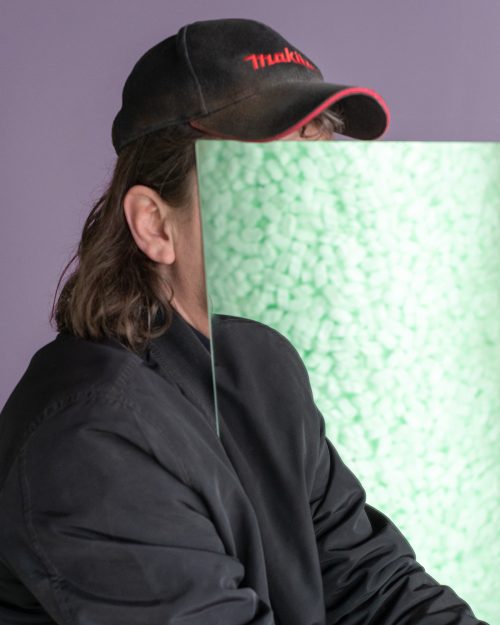
Inga Danysz
Inga Danysz In Ancient Rome

Sarcophagus 02, 2022 Aluminium, fabric Dimensions variable (191.5 × 54 × 34 cm)
Advertisement


Sarcophagus 01, 2022 Aluminium, stainless steel 191.5 × 54 × 34 cm










Untitled, 2022 Stainless steel 25.5 × 15.4 × 5 cm



Ladder (Chicago), 2022 Glass, stainless steel Dimensions variable
I think the most traumatic scene in Tim Burton’s Sleepy Hollow, is a scene where juvenile Ichabod Crane sees his mother, condemned as a witch, burst out of an iron maiden drenched in blood, her fresh corpse covered in flies.
When I worked in a torture museum, this horrific device was undoubtedly my favourite. Its questionable authenticity shrouds it in mystery. I can’t resist the comparison to Danysz’s totemic sculptures. Resembling ancient sarcophagi or some nameless cosmonauts’ casket, the works pull me towards the immutable question: what we do in life, does it count in eternity? If these symbols are woven together, forming the DNA of human history and the collective psyche, then Danysz situates herself within the chain.
The Pharaohs decorated their mighty tombs with magic spells to protect their souls in the afterlife. The difference between a baker’s corpse and the royal architect’s is the quality of the sarcophagus; is it stone or wood, built to last or eventually degrade? Danysz’s anachronistic sculptures unite us with these genderless, anonymous shapes. Rendering our bodies equal and cooperative, in an almost communist aesthetic. Imagine shrinking these sculptures to the size of a shabti doll, a sarcophagus shaped miniature buried with the deceased in the hope you would be granted less work in the afterlife. Hundreds of shabti dolls buried in the tombs of the pharaohs suggests even royalty was not exempt from labouring for the gods.
Life extension is today’s medical pursuit; I want to escape this posthumous labor a little longer until they find a cure for dying. But unlike cryo-chambers, Danysz’s sarcophagi are minimalist, no spell engravings or high-tech air filtration. Claustrophobic yet open, the presence of the object resonates in a physical and psychic way, similar to her previous works that question the agency of the individual within the infrastructure of global capitalism. In the exhibition, I see a procession of glass handles crawling up the wall to form some kind of transparent ladder. Danysz lures us in with the illusion of climbing the ‘social ladder’ but in reality, it is fragile, unstable, it’s just for show.
In Ancient Rome is a playground for associative contradictions. Are they macabre devices or some armoured shield for the body, protecting us from the horrors of the outside world. I see the sculptures as transformational spaces for latent interaction. A magician’s box where she lays down and closes out the world, hoping to experience transcendental insight, emerging as someone made anew. In this view, Danysz’s specular works do not contain or preserve bodies. They preserve the idea of choice. Whether you see a restrictive or protective space is your choice to make. What meaning or lesson to derive from your life’s fable is your decision alone. I hope I slip not into individualist inertia but re-emerge disillusioned of my mortal vanity. I don’t need this fantasy of eternal life anymore.
Mary Furniss




